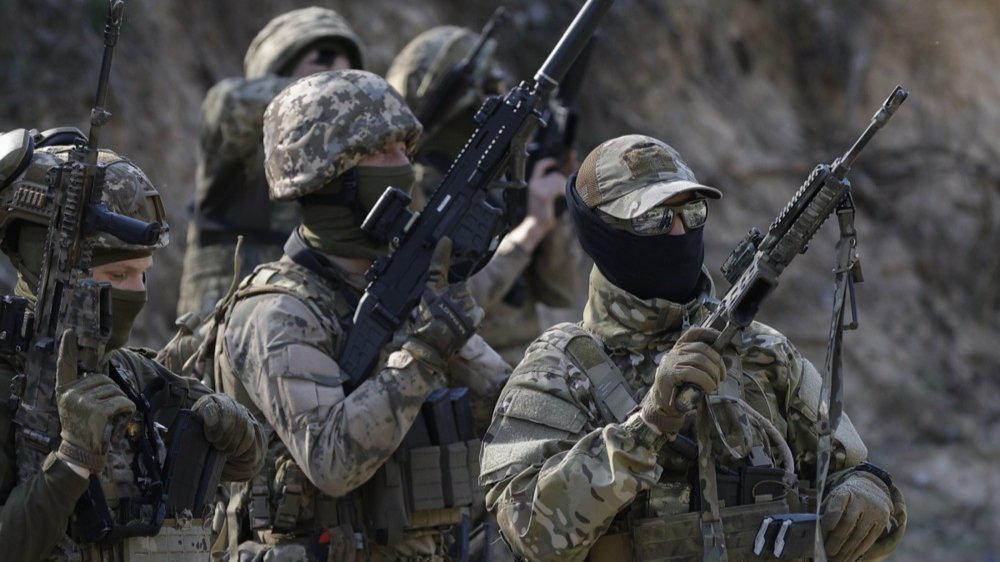Russian forces have been forced into a defensive position on their own territory following an ongoing Armed Forces of Ukraine (AFU) incursion into the country’s southwestern Kursk region that began on Tuesday morning, the first time that the AFU has entered Russian territory since the start of the war.
While the AFU has typically not commented on the Kursk incursion, the Russian Defence Ministry said that 300 soldiers of the AFU’s 22nd Mechanised Brigade supported by 11 tanks and more than 20 armoured vehicles approached the Russian border on Tuesday.
Speaking to reporters on Wednesday afternoon, Putin called the Ukrainian incursion “a large-scale provocation” before claiming without evidence that the AFU were “firing indiscriminately from various types of weapons, including missiles, at civilian buildings, residential buildings and ambulances”.
Lieutenant Andriy Kovalenko, the head of the Ukrainian Security and Defence Council’s Centre for Countering Disinformation, said that Russia no longer controlled the border. Novaya Europe spoke to Ukrainian military expert Roman Svitan about the latest events.
“This isn’t the Russian Volunteer Corps or the Freedom of Russia Legion. These are AFU units entering Russia,” AFU reserve colonel Svitan told Novaya Europe. “This is a battalion task force made up of a reconnaissance battalion, supported by a tank company and two dozen armoured fighting vehicles to transport several hundred infantrymen. While the government in Kyiv is unlikely to either confirm nor deny AFU involvement, I am fully confident that this is battlefield reconnaissance.”
“The attack has met no serious resistance. Russian troops, including border guards and the National Guard all dispersed. The Russians then deployed air power — Sukhoi Su-25s and helicopters. We know one Kamov Ka-52 attack helicopter was shot down, apparently using a man-portable air defence system, probably a Stinger. There is currently fighting a few kilometres from the border near the town of Sudzha. Russia is attempting to deploy thousands of soldiers in the area to attack the Ukrainian regional centre of Sumy.”
If the reconnaissance mission is successful, the incoming units will be able to gain a foothold on elevated ground near Sudzha and wait for reinforcements, Svitan says, adding that this would mean that the line of contact would pass through Russian territory.
Ukraine has the right to take such action in self-defence under international law, Svitan stresses. The AFU captured several Russian fighters during the operation, including conscripts, Svitan believes.
“The Russians will have to withdraw their troops from another area to stop the AFU offensive,” Svitan continues. “They could come from the Donetsk or Luhansk regions. The forces that have been mustered to attack Ukraine’s Sumy region are also likely to become involved. The AFU has now managed to stretch out the front line considerably. If they are able to consolidate their position on elevated ground and bring in a brigade’s worth of reserves, then it would be extremely difficult to dislodge them.”
“Russia has absolutely no control over the border as things stand — the whole 600-kilometre-long border between Russia and Ukraine. We’ll know more in the next couple of days. I have said many times that if the AFU wanted to, they could easily organise an incursion into the ‘land of unafraid idiots’, i.e. Russia.”
Svitan said he thought it highly unlikely that the AFU operation would be supported from the air by the state-of-the-art F-16 fighter jets that were recently transferred to Ukraine, though he said he expected Su-25 attack aircraft, cruise-missile-armed Su-24 tactical bombers, and Su-27 fighter jets to provide Ukrainian ground troops with air cover.

